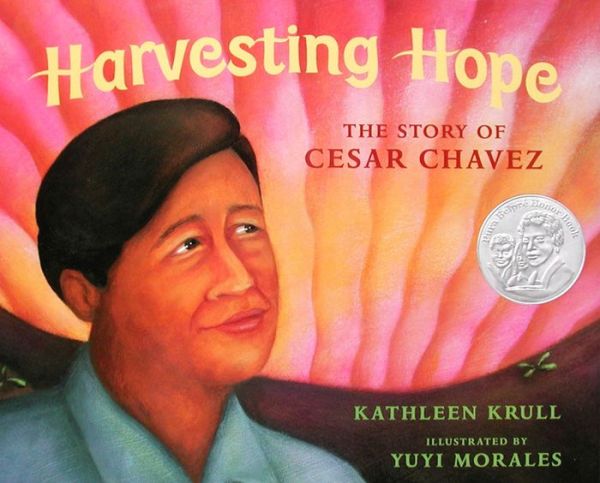Harvesting
Hope: The Story of Cesar Chavez
By Kathleen
Krull
Ages: 6-9
Grades: 1-3
Summary: This is a non-fiction story about Cesar
Chavez’s life. He is one of the
most well known civil rights activists in American history. Cesar led a 340-mile peace protest
march to Sacramento California.
His family owned a farm in Arizona and was surrounded by caring family and
friends. Unfortunately, up until
Cesar was ten years old, a drought ruined the family farm and they had to
search for other ways to produce income.
They eventually ended up in California working as farm helpers. Here they suffered severe conditions in
exchange for barely enough money to live off of. Cesar decided that is wasn’t air that he was being
mistreated for his race and that he must make a change. He gathered an organization that fought
for migrant farm workers rights.
He swore against using violence and chose strikes and protest to make
his point. He started a march of
67 people, and ended up with 10,00 people marching, to let people know that he
is tired of being powerless.
Element
#3: Exploring Issues of Social Injustice:
This story teaches students of important past history, as well as
courage and triumph. It covers
topic of race, hard days of labor, workers rights. Cesar overcame a complex problem with justice for farm
workers, without using any violence.
He led migrant workers to the first successful agriculture strike that
the U.S. had known, signing the first farm worker contract in American history.
Follow up
Activity: Cesar made others aware of the conditions that the workers were
suffering. He raised awareness and
support for change. A good follow up activity is for students to interview
people from their household including parents, grandparents, aunts, uncles,
etc. They can ask them questions
about their first job, what they did, what were the conditions like, how were
they treated, who did they work with, etc. After this, students will create this interview into the
format of a newspaper article, including pictures.

No comments:
Post a Comment